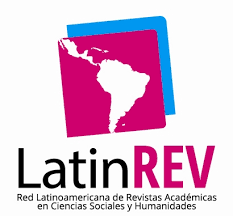The Importance of History. Leisure Teaching in Secondary School Students
DOI:
https://doi.org/10.5281/zenodo.6599895Keywords:
History, Strategy, Ludic, Learning, Didactics, TeachingAbstract
History as a subject usually causes problems of apathy in many students, not only on Primary and Secundary level education, this is also presented on higher Mexico Education levels as High school. Through the educational reforms that have been implemented, where the main objective is to improve teaching and that students achieve the expected learning. Concerned about the role played by the teacher and their practice in relation to the student and their learning. The last modification that was made was the Reform of Basic Education 2011 (RIEB), where different strategies are proposed to transform the classes by implementing a didactic form that favors creativity, reflection, being critical, implementing and promoting responsible use of digital media; components with which the student must count when they finish basic education degree. Reasons for which it has been sought to change the teaching models, avoiding the regular class, improving the activities that benefit memorial learning. One of the strategies that has had the greatest impact on the different professional practices is learning while playing, implementing recreational activities in order for the student to learn the different contents, hand in hand with the game.
Metrics
References
Arias y Simarro, Concepción. (2010). ¿Cómo enseñar la Historia? Técnicas de apoyo para los profesores. México: Instituto Tecnológico y de Estudios Superiores de Occidente (ITESO).
Caillois, Roger. (1994). Los Juegos y los Hombres. La Máscara y el Vértigo. México: FCE
Cooper, Hilary. (2002). Didáctica de la Historia en la Educación Infantil y Primaria.España: Morata.
Furlan, Alfredo. (2000). Metodología en la Enseñanza en Antología de Medios para la Enseñanza. México: UPN
González, Alba Susana. (2000). Andamiajes para la Enseñanza de la Historia. España: Lugar.
Huizinga, Johan. (2008). Homo Ludens. España: Alianza/Emecé.
Mariotti, Fabián. (2014). Creatividad y Desarrollo de la Personalidad a través del Juego. México: Trillas.
Murphy, Julia. (2007). Más de 100 ideas para enseñar Historia. España: Graó.
Rodríguez, Xavier. (s/m,1998). “El Nuevo Milenio y la Enseñanza de la Historia” en Enseñar Historia. Número 1, México. p.p. 4-6.
Salazar Sotelo, Julia. (2001). Problemas de enseñanza aprendizaje de la historia. ¿…Y los maestros qué enseñamos por historia? México: UPN.
Saldaña. (1997). Libro del Maestro 5to. Grado. México: SEP.
Secretaría de Educación Pública SEP (2011). Programa Escuelas de Calidad (PET) 2011. México: SEP.
Secretaria de Educación Pública SEP. (2007). Guía didáctica de Formación Cívica y Ética para la educación primaria. México: SEP.
Secretaría de Educación Pública SEP. (2011). Programa de Estudios 2011. México: SEP.
Vargas, Raúl. (s/m-1998). “Reflexiones en torno al programa de Historia en Educación Secundaria”, en Enseñar Historia. Número 1, México, p.p. 7-9.
Vázquez, María de la Luz. (2000). Historia Universal de la Antigüedad al Renacimiento. México: Limusa.
Published
How to Cite
Issue
Section
License

This work is licensed under a Creative Commons Attribution-NonCommercial-ShareAlike 4.0 International License.
This journal adheres to the Creative Commons license in the definition of its policy of open access and reuse of published material, in the following terms:
- Accessibility to articles and other publications in whole or in part under the concept of copying, distribution, public communication , interactive access (through the Internet or other means), explicitly maintaining the recognition of the author or authors and the journal itself (authorship acknowledgment).
- Warning that if the articles are remixed, modified or fragments used in other creations, the modified material cannot be distributed, nor is it allowed to reconstruct versions from the original published articles (derived works).
- The use of the contents of the published articles, in whole or in part, for profit (non-commercial recognition) is prohibited.
The author retains copyright, transfers or grants exclusive commercial rights to the publisher, and a non-commercial license is used.














